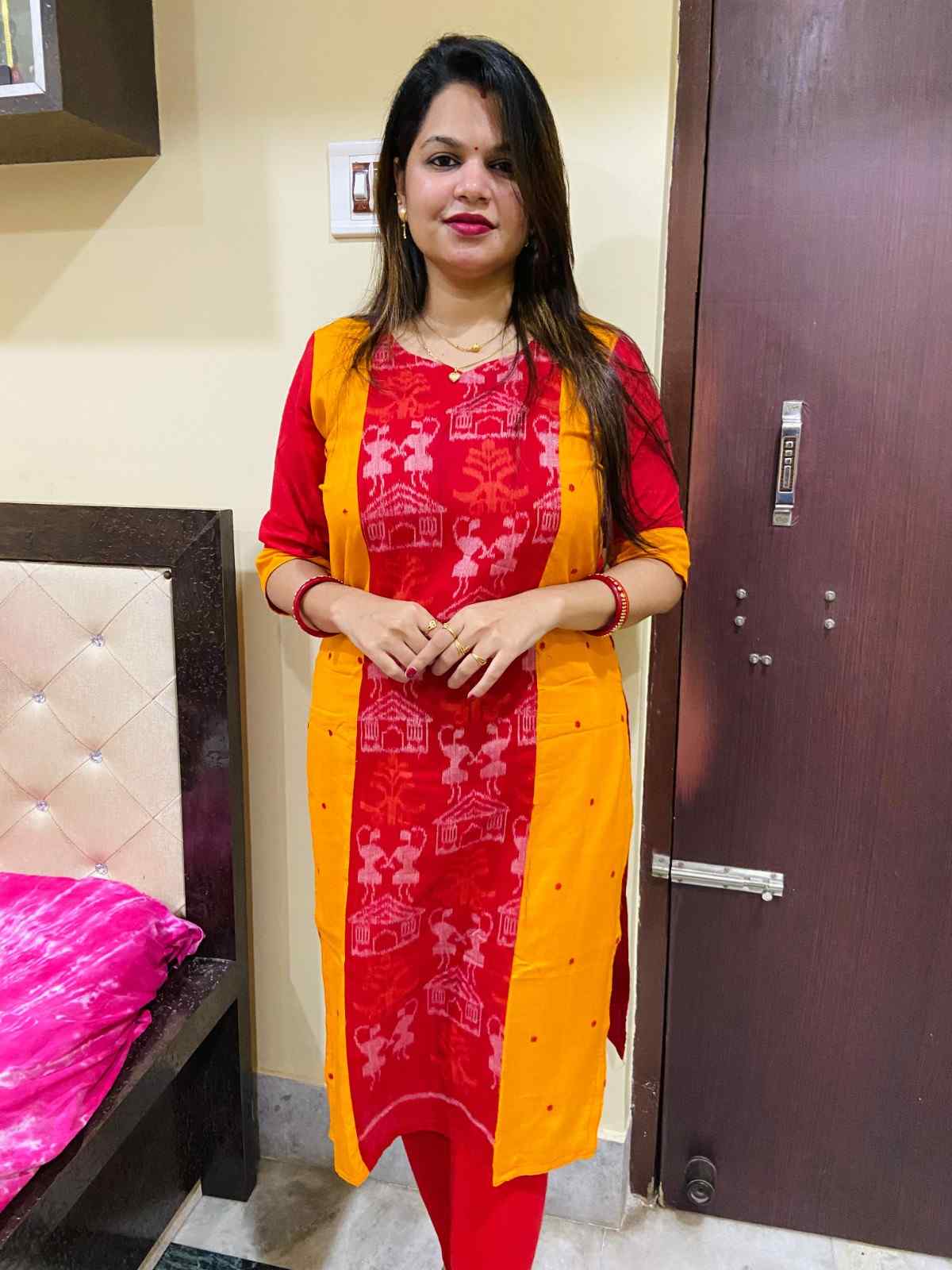Overall Appearance:
The kurti would be a striking combination of bright yellow and deep red, likely with the colors intricately interwoven rather than simply blocked. The beauty lies in the traditional Sambalpuri "Bandha" (Ikat) tie-dye technique, where the warp and/or weft threads are dyed before weaving, creating blur-edged patterns.
Color Distribution:
* Yellow: This vibrant and cheerful color would likely form the dominant base or a significant portion of the kurti, perhaps as the body color.
* Red: The deep, auspicious red would be used for contrasting patterns, borders, or even as the primary color for certain sections. The interplay between the two colors would be key to its visual appeal.
Fabric:
* Material: Most likely a soft and breathable cotton or a luxurious silk, depending on the desired drape and occasion. Sambalpuri fabrics are known for their comfort and durability.
* Weave: The distinctive Sambalpuri Ikat weave would be evident, characterized by its subtle irregularities and the mesmerizing "blur" effect of the patterns.
Design Elements and Patterns:
This is where a Sambalpuri kurti truly shines. Common motifs that could be featured include:
* Traditional Motifs:
* Conch (Sankha): A very common and auspicious motif in Odisha.
* Chakra (Wheel): Symbolizing movement and cycles.
* Flower (Phula): Often stylized and geometric.
* Animal Motifs: Such as deer, elephants, or peacocks, often rendered in a geometric, abstract style.
* Geometric Patterns: Intricate checks, stripes, diamonds, or honeycomb designs, often forming the backdrop or part of the main design.
* Pattern Placement:
* Body: The main body of the kurti might feature all-over small Ikat patterns in red on a yellow base, or larger, more spaced-out motifs. Alternatively, it could have a simpler base with concentrated design elements on the yoke or lower part.
* Yoke/Neckline: Often adorned with more intricate or larger motifs, sometimes with a contrasting red border or pattern.
* Sleeves: Could have complementary patterns, matching the body or featuring a contrasting border at the cuffs.
* Hemline: A distinctive red border, perhaps with elaborate Ikat designs, would be a classic feature, providing a beautiful finish.
Style and Cut:
* Silhouette: Could be a straight-cut, A-line, or slightly flared, depending on contemporary fashion trends, while still maintaining a comfortable and elegant drape.
* Neckline: Various options are possible, from a simple round or boat neck to a more traditional keyhole or V-neck, often edged with a subtle piping or a thin border.
* Sleeve Length: Typically three-quarter length, but can vary.
Texture:
The handloom weave would give the fabric a unique texture, a testament to the artisan's skill. It wouldn't be perfectly smooth like machine-made fabric, adding to its charm.
Shifting Date-10-12days

.jpg)
.jpg)
.jpg)
 (1).jpg)
Reviews (06)
Leave A Review